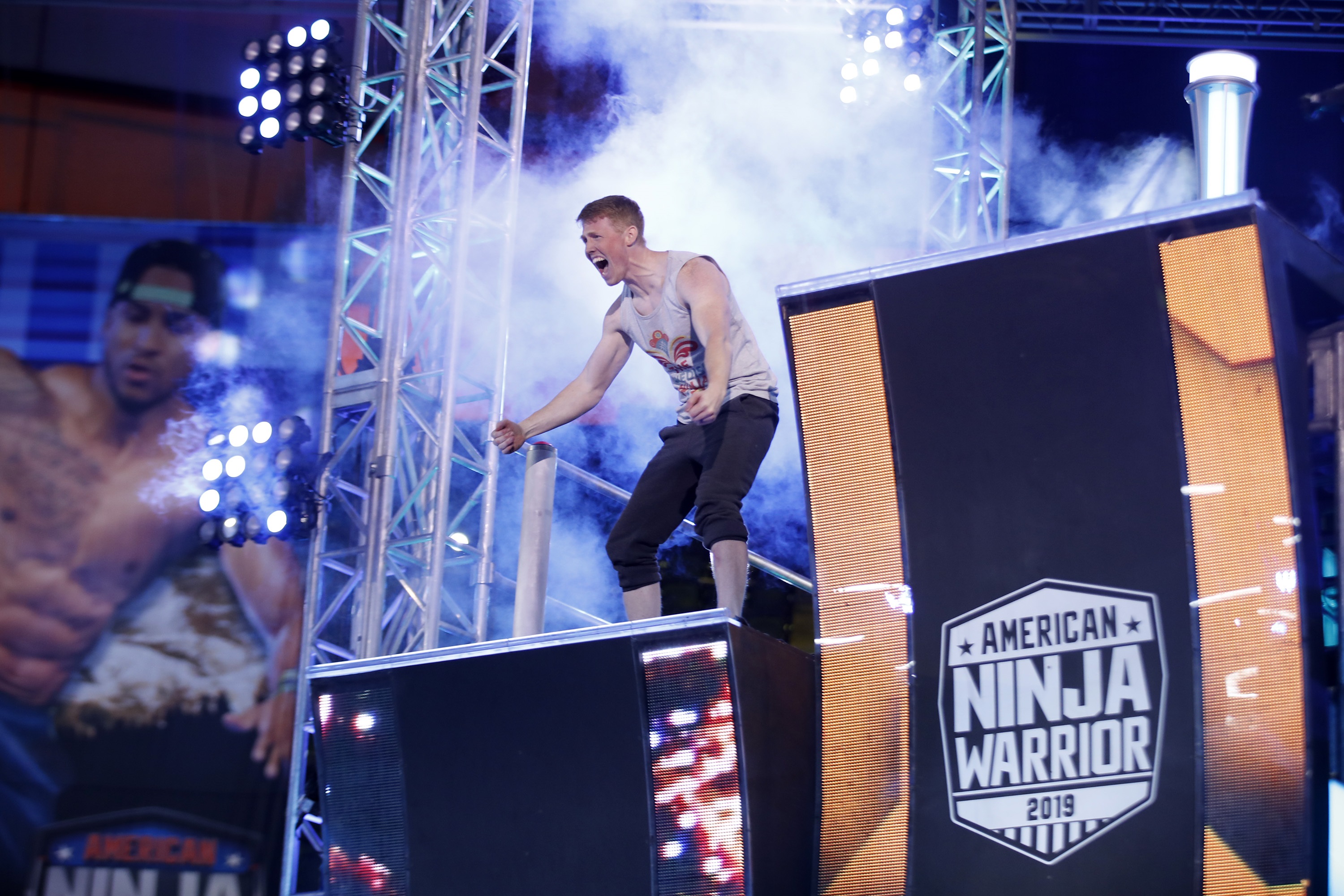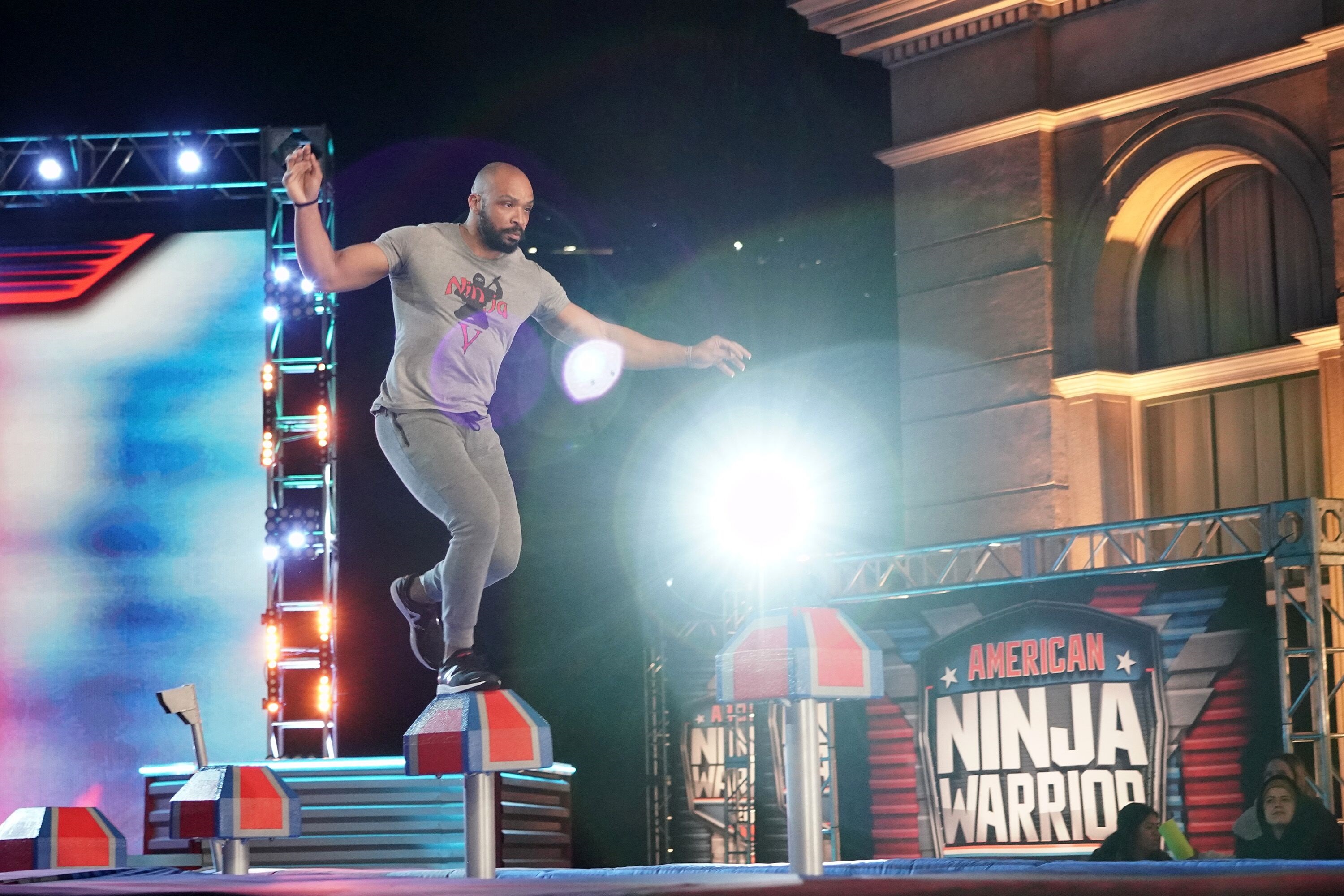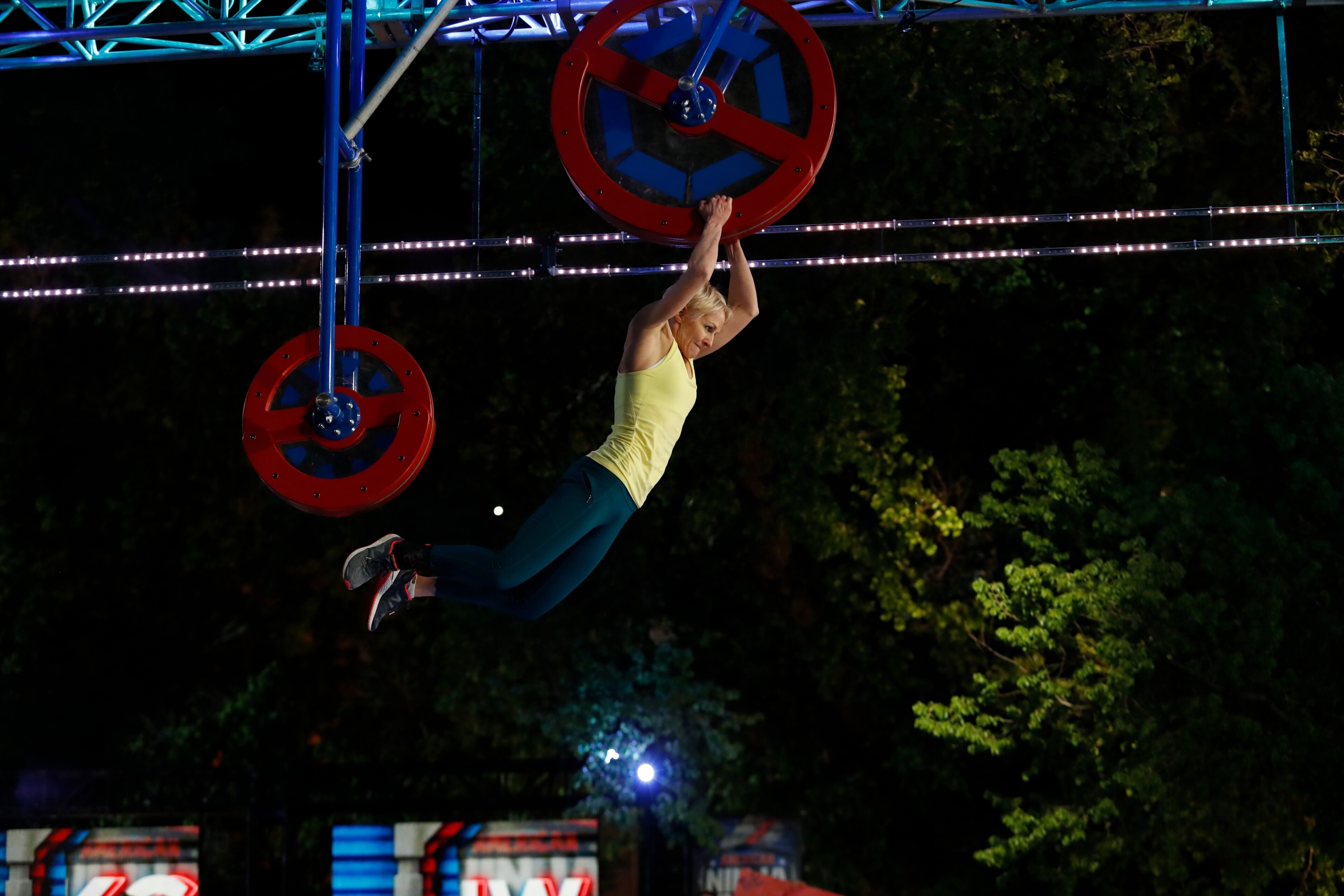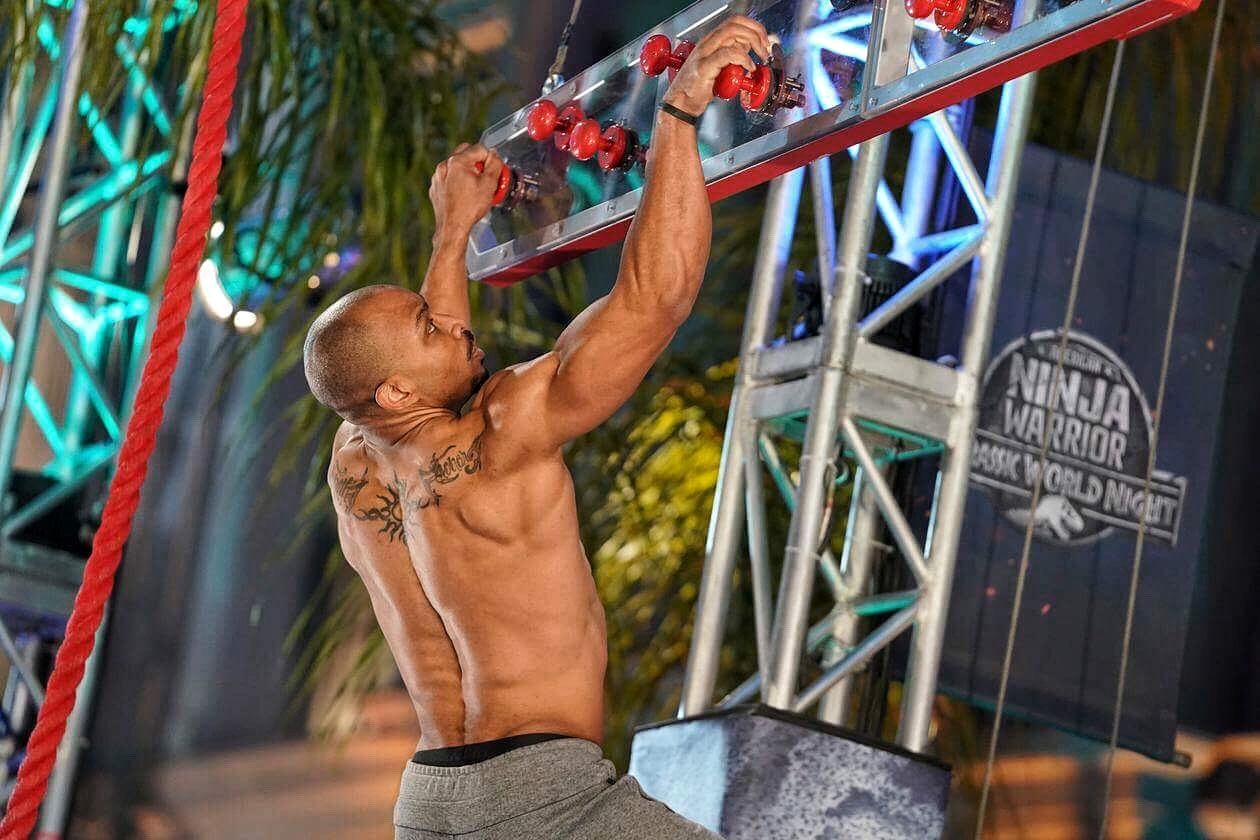These Determined PAs Have What it Takes to be American Ninja Warriors
‘American Ninja PAs’ Pull Strength from Their Daily Practice
July 24, 2019
By Hillel Kuttler

Leif Sundberg had just sprinted across several floating steps in the first of six “American Ninja Warrior” obstacles when the television program’s broadcaster remarked that Sundberg was displaying “urgency here on his run.”
Very true. Sundberg took just 58.75 seconds to complete the course in the Tacoma, Washington, qualifying round of the NBC reality show that aired on June 24.
For the St. Catherine University PA Program student, that run secured a first-place finish and a spot in Tacoma’s final round the next night.
Sundberg has company in a sub-category of the show that could be dubbed American Ninja PAs.
American Ninja PAs are finalists
Verdale Benson, PA-C, who works in occupational medicine near San Francisco, and Karen Wiltin, PA-C, who works in pediatric craniofacial surgery in Dallas, also reached a city final this summer, in Los Angeles and Oklahoma City, respectively. Sundberg, Benson, and Wiltin have now been city finalists for two consecutive years.
Benson has advanced a step further. His 12th-place finish in Los Angeles vaulted him to his first national final (to be broadcast on four consecutive Mondays, beginning August 26) in Las Vegas and, with it, a shot at the show’s $1 million prize. Wiltin and Sundberg wouldn’t reveal whether they’ve joined Benson there, because their city finals won’t air until July 29 and August 5, respectively.
All train at ninja warrior-themed gyms, which have proliferated across the United States since the TV show, a Japanese concept, began 10 years ago.
While plenty busy as a PA student in Minneapolis, Sundberg has this advantage: The training class he runs for adults at a ninja-warrior gym in nearby Edina enables him to use the facility at no charge for his own workouts.
[From Riding Bulls to Seeing Patients: Former Pro Becomes PA]
Sundberg also trains on a rock-climbing board in his basement and he strengthens his grip, one hand at a time, on a V-shaped spring while driving. Wiltin’s husband built a room that holds her monkey bars, a campus board, and other workout equipment. Benson also trains on another gym’s rock-climbing walls.

Commonality in professional and athletic pursuits
Benson sees commonality in his professional and athletic pursuits. As a PA, he works “to actively heal others and educate them on how to increase their well-being,” he said. “As a ninja athlete, that drive pushes me to attain my highest level of well-being.” To Wiltin, “an extreme amount of focus” is required during surgery, and she tries on “American Ninja Warrior” to “hone in on that ability to focus and execute each obstacle.”
The trio brings “positive energy with them,” said the show’s co-executive producer, David Markus.
“The fact that they’re helping people day-to-day as PAs tells you about the kind of people they are,” Markus said.
All three closely followed the show before envisioning themselves as competitors. After completing lengthy application forms and submitting video clips of their training sessions, they were among 600 people chosen for this season’s six city competitions. Approximately 80 people reached the national final.
In training and in competitions, each appreciates the cooperative, rather than adversarial, spirit that pervades. Ninja warriors readily encourage one another and share tips.
Wiltin’s training mates are “like my second family,” she said. “It’s a positive environment to be in. We support each other.”
The show’s courses pack plentiful challenges into obstacles carrying names evoking amusement park-like intimidation: Rolling Thunder, The Wedge, The Warped Wall, Wave Runner, Doorknob Drop.
[Running Over Barriers: Ultra Runner PA Competes After Amputation]
Never swung from a trapeze before? Forget it. Afraid of losing grip on a bar and plunging into a pool of water? Better find something else to do. Camera lights daunting during the late-night, outdoor filming sessions? Stay home.
Physical and mental toughness required
Add to that the obstacles’ variance so participants can’t easily anticipate the courses they’ll encounter. All courses, though, test competitors’ agility, speed, upper-body strength, grip, hand-eye coordination, and mental toughness.
In those areas, the PA competitors draw upon their pre-ninja athletic backgrounds.
Wiltin played youth softball and now runs in marathons and triathlons. Sundberg played baseball and soccer. Benson played basketball and ran track; in the U.S. Army, he embraced the rigors of training.
“I was the guy who loved the drill sergeants ordering us to do drills,” said Benson, who served in Iraq and Afghanistan and earned a Bronze Star and a combat medic badge. “The physical challenge really gets me [going].”
Sundberg said he invests “100 percent commitment all the time” in schooling and ninja-warrior training. “You can’t find success in either by giving partial effort,” he said. Sundberg said that while “it’s been difficult trying to excel [at both], it’s been incredibly rewarding reaping the benefits.”
[PA Julie Mueller Thrives in Remote Antarctica]
There’s been overlap, too. Sundberg and a fellow student are preparing a research project on injuries common to ninja athletes. One of his PA professors, Mehnaz Parvez, expressed admiration for Sundberg’s ability to juggle training and studies.

Discipline and focus overcome obstacles
“There has to be discipline and focus to overcome the obstacles,” Parvez said.
Wiltin’s biggest challenge was transforming her training of slow-twitch muscles in road running to training the fast-twitch muscles “American Ninja Warrior” calls upon. That means heavy doses of trampoline work, box jumping, weightlifting, and quick sprints.
Benson has adapted, too. His muscular, 200-pound frame presents challenges because “American Ninja Warrior” competitors regularly must hang by their hands, said Brian Kretsch, manager of the ninja gym where Benson trains.
Heading into the Los Angeles final, Kretsch intensively coached Benson on his balance. He also changed the heights of obstacles and the spaces between them.
“We were doing it over and over. Verdale has never shied away from learning, or been too arrogant to learn, the right technique,” said Kretsch, who’s also a Las Vegas finalist.

The Strip awaits. Las Vegas’s 23-obstacle course demands far more than the earlier city competitions. To win the prize, the final task Benson or anyone else – perhaps Wiltin and Sundberg, too – must master is climbing by rope an 80-foot-high tower of metal scaffolding nicknamed Mount Midoriyama, after Japan’s original ninja warrior. In the American show’s 10 national finals, just two people have scaled Mount Midoriyama.
For all anyone knows, Benson already is $1 million richer. But he revealed nothing, speaking as if the outcome remains undecided, the Vegas obstacles yet to be overcome.
“I have tunnel vision,” said Benson. “I only see the course. Everyone will get the nerves. It’s a matter of controlling them.”
Hillel Kuttler is a freelance writer and editor. Contact him at [email protected].
Read More
PA Trains as Ninja Warrior
Thank you for reading AAPA’s News Central
You have 2 articles left this month. Create a free account to read more stories, or become a member for more access to exclusive benefits! Already have an account? Log in.



